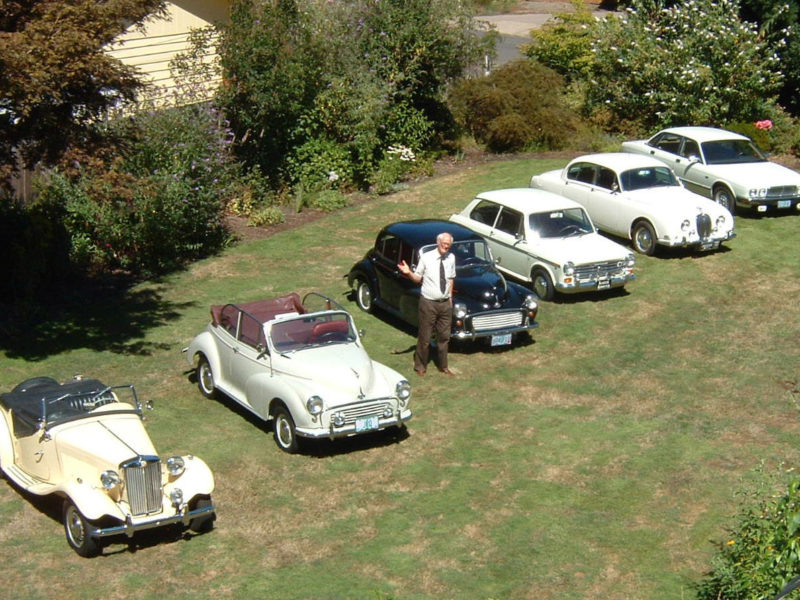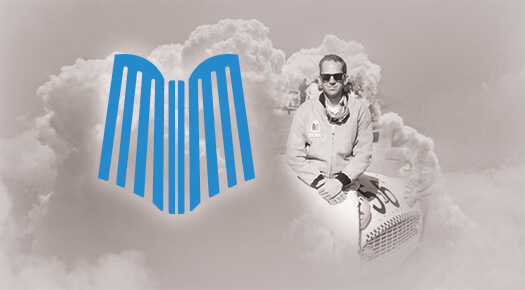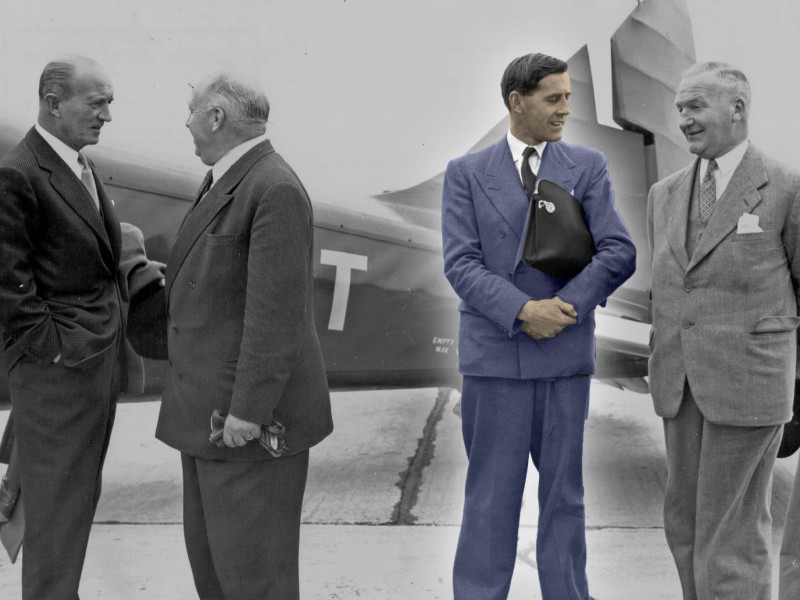
Bob Tullius was very successful as a racer, promoter and team owner. His Group 44 Inc. team raced a host of Triumphs, MGs and Jaguars, earning national and international success.
Bob Tullius is legendary as a driver, race team owner and motorsports marketing innovator for Triumph, British Leyland and Jaguar. He ran one of the most successful road racing teams from the 1960s through the ’80s, and campaigned so many of our favorite cars: MGB, Midget, Spitfire, TR3, TR4, TR6, GT6, TR7, TR8 and XKE.
During his Group 44 Inc.’s 25-year run where fans could’ve bet on 비트코인 카지노, they celebrated nearly 300 overall victories while competing in three of the toughest road racing series in America: SCCA Club Racing, IMSA GTP endurance events and SCCA Trans-Am pro contests.
Tullius’ racing passion was ignited when he took his TR3 to driving school and won the race held at the end of the school. He finished first or second in his first four races and nailed the points championship. Triumph decided to give the hot young driver a TR4, which he built into a race car with the help of fellow competitor Ed Diehl. Tullius finished second in the first race at Lime Rock, but disaster struck at the next outing at Lake Garnett, Kansas.
“While out on the course during practice, an exhaust part came off the car in front of me,” said Tullius. “I ducked to the right, which pulled the steering wheel in that direction and I went off course, hit a tree and totaled the car. Triumph was not happy when I called to tell them I needed a new car. They declined to supply another one.”
Undeterred, Tullius and Diehl bought two additional wrecked TR4s and in just three weeks built one good one from all the parts. They shared the car in SCCA competition, never losing a race or suffering a DNF.
When Tullius’ boss at Kodak forced him to make a decision between his day job and his racing hobby, Tullius chose racing. Life was looking up when Triumph gave him one of Kas Kastner’s Sebring TR4s. But in that era, racing was a rich man’s hobby, and he had a family to support. To continue racing full-time, he knew he had to find a way to make racing into a profitable business. That’s when Group 44 Inc. was born.
The road racing team, named for Tullius’ racing number, took a radically different approach at the time, now considered the model for modern motorsports marketing. Combining Tullius’ race and sponsorship savvy, Brian Fuerstenau’s mechanical ability and Dick Gilmartin’s Madison Avenue advertising expertise, they produced professionally prepared race cars, racing results and major publicity for sponsors.
Their financially sustaining business model featured three sources of income: building competition cars for resale, maintaining existing race cars for customers, and securing corporate sponsors for their own efforts. With Tullius racing a TR4, Gilmartin racing a Spitfire and Fuerstenau racing a TR3, they certainly had Triumph on board, but they landed a major sponsorship with Quaker State Motor Oil as well.
To give their sponsors real value, Group 44 provided a slick professional look, generated huge publicity and complemented their sponsors’ marketing efforts. They developed a team look—white with swooping green stripes—that was featured on cars, team uniforms and one of the first-ever team transporters in the motorsports world. They made quite an entry when they arrived at the track. Cars were always meticulously prepared.
For each race, the team got the local dealers involved: cars were displayed in showrooms, and the excitement was used to motivate potential buyers. They also held marketing seminars for dealer sales staff to show them how the racing could enhance sales. They held sports car driving and safety classes in the community to enhance interest and dealer sales. And they got team coverage in newspapers, magazines, television and radio.
Into the ’70s Tullius and Group 44 raced a variety of British Leyland cars including the TR4, TR250, TR6 and GT6, adding to the trophy case with success in SCCA regional and national events. But as the TR6 became less competitive in its class, Group 44 looked to the V12-powered Jaguar XKE in the B Production class. It took time to convince Jaguar to take the car racing, but the company finally decided to back Group 44 on the East Coast and Joe Huffaker on the West Coast.
It took Fuerstenau and crew chief, Lanky Foushee, 3500 hours to turn the E-Type into a racer. In its first race in 1974, Tullius was leading at Watkins Glen with three laps to go when the gear shift lever broke off in his hand. But he won the next five races in a row and just barely missed the championship win.
The following year, Tullius had to face off against Huffaker Engineering’s factory-backed XKE at the SCCA Runoffs. Lord Donald Stokes, managing director of British Leyland, came to witness the showdown. But the other XKE met its demise on the pace lap, and Tullius went on to take the championship.
Tullius then took Jaguar to another series, SCCA Trans-Am racing. They claimed the season championships in 1977 and 1978 in an XJS.
From there, the partnership set their sights on the IMSA Camel GTP program. After finishing second overall in the 1988 points race, they headed to LeMans in 1984 and 1985; the move marked Jaguar’s return to that race after a 30-year hiatus. But the Group C machines outclassed the Group 44 XJR-5. “If you took the New York Yankees to play a ball game with the London Cricket Club, they wouldn’t be competitive because even though it was a ball game, it wasn’t the same ball game,” Tullius once said of the situation.
Tullius raced a Jaguar XJR-7 in the IMSA Camel GTP Championship in 1985 and ’86, finishing his racing career with one last victory. The team hired Hurley Haywood as driver in 1987, but the long relationship with Jaguar ended with the conclusion of the season. Tullius said, “Without a doubt, my involvement with Jaguar was one of the highlights of my racing career.”
Three years later, in 1990, after two more Trans-Am championships for Audi, Group 44 lost their sponsors and closed shop.
The championship-winning E-Type is now a popular display at the Jaguar Daimler Heritage Trust on Browns Lane in Coventry, England. The company calls it “a significant milestone in the continuing development and growth of Jaguar Cars and its related companies.”
Group 44’s 25-Year Race Record:
14 SCCA national titles
3 Trans-Am championships
Total of almost 300 race wins
11 IMSA race wins
Bob Tullius’ Racing Timeline:
1961: Goes to driving school with his TR3 and wins first race.
1962: Wins first championship in TR3 and gets first factory car from Triumph, a TR4.
1964: Wins the first American Road Race of Champions at Riverside in a TR4.
1965: Forms Group 44 Inc. in Falls Church, Virginia. Wins 9 of 11 races in his TR4 plus SCCA regional championship.
1966: Wins the first-ever Trans-Am race, held at Sebring, in a Dodge Dart.
1967: Wins the Trans-Am race at Daytona in the Dodge Dart.
1975: Wins 12 of 17 races in SCCA B Production and the national championship in a Jaguar V12 XKE. Wins the SCCA National at Lime Rock in a Jaguar XJS, setting the B Production lap record.
1977 & ’78: Wins Trans-Am Series in a Jaguar XJS.
1983: Takes second in the IMSA championship in a Jaguar XJR-5.
1984 & ’85: Competes in Le Mans 24-hour race in a Jaguar XJR-5.
1986: Retires from racing with a last race victory.
1990: Racing operations end for Group 44.







'Bob Tullius, Group 44 Inc.' have 8 comments
March 30, 2015 @ 1:57 pm Memories of "The Vintage Triumph" - Richard M. Langworth
[…] I haven’t the space. We looked back on the noble TRS performance at Le Mans ’61 (TVT 7); Bob Tullius’s Group 44 (TVT 11) , the goofy “Sectioned Mayflower” (TVT 10); the TR-powered Morgans (TVT 18); the […]
May 11, 2016 @ 4:48 pm Bill Morris
I lived very close to the Group 44 shop in Falls Church (7 Corners, to be exact) . A fellow racer, Patty Mernone, had her Morgan wrenched by Brian Furestenau and introduced me the Gp. 44 guys. The cars were spotless, and very fast and we’ll piloted. I know Bob doesn’t remember me, but I sure remember them. Great times & great memories.
September 19, 2016 @ 1:25 pm Chris
Interesting that the times 1980/81 were left out, with the TR8 in TransAM and IMSA racing
September 9, 2017 @ 5:38 pm Bruce G Butler
I’ve had a 50 year Triumph TR4 love sffair… Raced ’em, sold ’em, owned 2 TR4As (still have a ’67 4A) Had the opportunity to rub elbows with the lads at Group 44. At Laguna Seca 1969 (maybe 68) Our race tires were stolen.. They gave us new wheels & tires so we could race!! Nice artical!
December 29, 2019 @ 8:36 pm ERIC HENDERSON
My father took me to road Atlanta as a child I watched in awe as a twelve cylinder jaguar
Laped every thing on the track by two laps
I will never forget get the exhaust notes
That would give me goose bumps on the straight away can you please tell me which race that was
I remember it was the last race of the XKE
P.S I bought an XK8 twenty years ago
March 6, 2020 @ 10:44 am Mark Budnick
Group 44 is an amazing journey of American Racing History. I would watch Bob Tullius and Bob Sharp Racing on the hill at Lime Rock Park. This was an incredible experience for a young person to view. They would be able to transverse this road course and not have the horsepower other vehicles in this race group would have. I was impressed. Perhaps I may give this a try. My father was good enough to purchase all the racing equipment for a British Racing Green TR-250 for me. I would work to assemble this vehicle every time I had off from employment into the night. I did see one article that Bob Tullius could place his TR-6 against Corvettes and be very successful. One SCCA Regional Race at Bridgehampton Raceway there were two Corvettes and A British Racing Green TR-250 was third from the pole. The flag was waved and turn one is straight downhill. A young man drove away very pleased.
August 22, 2022 @ 10:37 am Harry V. Quackenboss
Bob Tullius also raced in SCCA Trans-Am (The Trans-American Sedan Championship), winning the first race at Sebring Florida in a Dodge Dart, and driving the Gray Ghost Pontiac Tempest built by mostly Pontiac engineering employees led by Herb Adams. In the 1971 season, at the first race at Lime Rock, Connecticut in the rain, starting last and running in 2nd place, blowing a head gasket with under ten laps to go. Said the announcer, “It came out of the mist, like the Gray Ghost”, and the legend was born. The car suffered typical first-year team teething problems, but had a 4th place and two 5th place finishes. Since 2016, the restored car owned by John Hildebrand, father of IndyCar racer J.R. Hildebrand. and has been in vintage races, including Monterey (6th place in 2022) and Sonoma Raceway, Long Beach, Mt. Tremblant, and Elkhart Lake. It is travelling East in 2022 for fall events at Lime Rock September 2-5, and Watkins Glen September 7-11.
November 17, 2023 @ 3:29 am Michael Strähnz
I’m thinking about replicating the V12XKE and need detailed technical information.
Does anyone have an idea where I can get these.
Thanks in advance